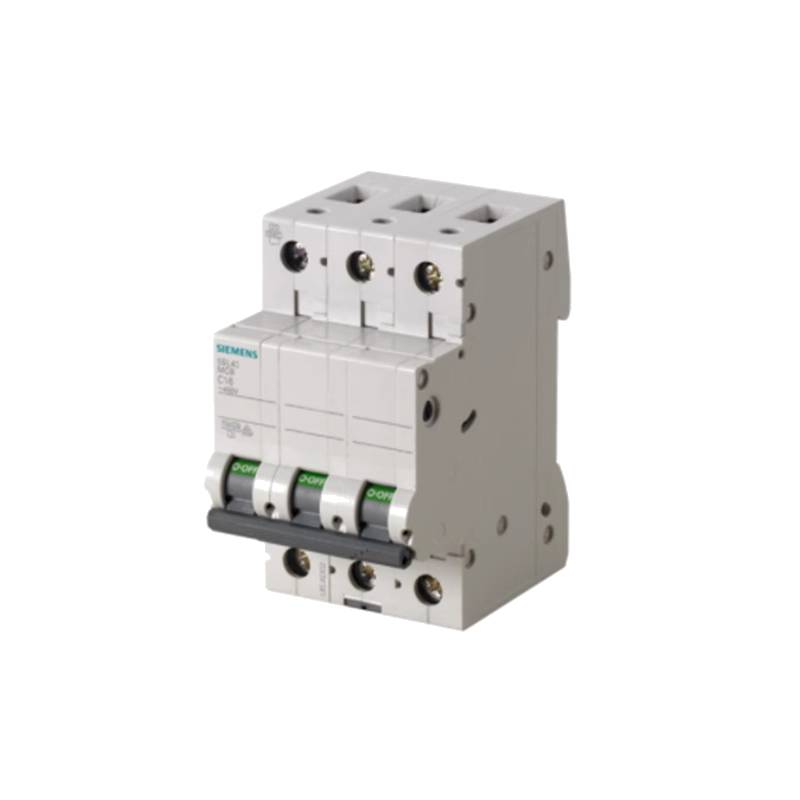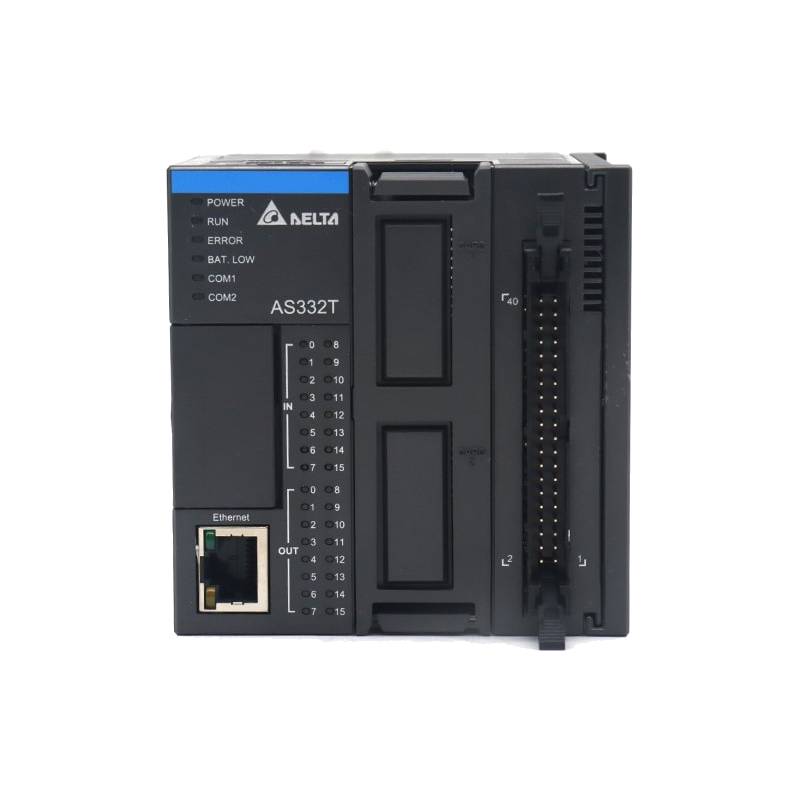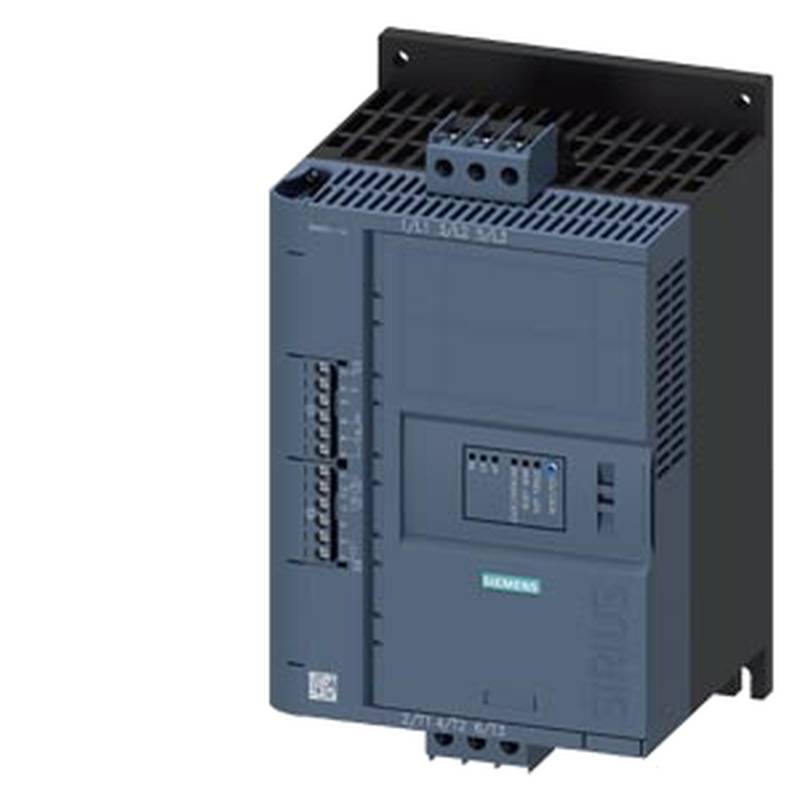
The Delta VFD25AMH43ANSAA MS300 VFD stands as a robust solution for industrial automation, offering a 25A current rating and a powerful 11kW capacity. This Variable Frequency Drive (VFD) is engineered for precise motor control, enhanced energy efficiency, and reliable operation across demanding applications. Its core advantages lie in its advanced control algorithms, compact design, and comprehensive protection features, positioning it as a competitive choice for modern industrial automation needs. Key technical parameters include a 3-phase input/output voltage of 380-480V, a maximum output frequency of 600Hz, and integrated braking capabilities.
Product Specifications
| Feature | Specification |
| :----------------------- | :------------------------------------------ |
| Model | VFD25AMH43ANSAA |
| Series | MS300 |
| Rated Current | 25A |
| Rated Power | 11kW (15HP) |
| Input Voltage (3-Phase) | 380-480V AC |
| Output Voltage (3-Phase) | 0-480V AC |
| Output Frequency | 0-600Hz |
| Control Method | V/f, Sensorless Vector Control |
| Braking Unit | Integrated |
| Protection Features | Overload, Overcurrent, Overtemperature, etc. |
| Communication Options | Optional Modules (e.g., Modbus, Profibus) |
| Dimensions (H x W x D) | 250 x 160 x 170 mm (approx.) |
Core Features & Market Positioning
The Delta MS300 series, represented by the VFD25AMH43ANSAA, differentiates itself through its advanced sensorless vector control, providing superior speed and torque performance even under varying load conditions. This technology is crucial for applications requiring precise motion control and consistent output. Its integrated braking unit enhances stopping accuracy and safety, reducing reliance on external braking resistors in many scenarios. The VFD's built-in PLC functionality allows for simplified logic control within the drive itself, reducing the need for external controllers and simplifying system design. Furthermore, its compliance with global safety standards and robust electromagnetic compatibility (EMC) design makes it a reliable component in diverse industrial environments. Delta's reputation for producing durable and cost-effective automation solutions further strengthens the MS300's market position.
Key Application Scenarios
The Delta VFD25AMH43ANSAA is exceptionally well-suited for a wide array of industrial automation tasks. Its precise control capabilities make it ideal for variable torque applications such as pumps and fans, where energy savings are significant. In manufacturing, it excels in conveyor systems, packaging machinery, and machine tools, ensuring consistent speed and smooth acceleration/deceleration for optimal production quality. The drive's versatility also extends to material handling equipment, textile machinery, and HVAC systems, where maintaining specific operating parameters is critical. Its ability to handle fluctuating loads and provide reliable performance makes it a go-to choice for modernizing existing equipment or integrating into new automated production lines.
Practical System Integration Guidance
Integrating the Delta VFD25AMH43ANSAA into an industrial system requires careful attention to wiring and parameter configuration. Ensure the power supply wiring is correctly connected to the L1, L2, and L3 terminals, with appropriate input circuit protection such as fuses or circuit breakers. The motor phases (T1, T2, T3) should be securely connected to the output terminals. For digital inputs (DI) and outputs (DO), refer to the manual for specific terminal assignments to configure start/stop commands, fault signals, and speed references. Programming via the keypad or through optional communication modules allows for customization of parameters like acceleration/deceleration times, maximum frequency, and V/f curves. Always ground the VFD and motor properly to mitigate electrical noise and ensure safety.
Operation and Risk Mitigation
Operating the Delta VFD25AMH43ANSAA demands adherence to safety protocols. Before powering on, verify all wiring connections and ensure the motor is properly isolated. During operation, monitor motor temperature and drive status via the display or communication interface. Common error codes, such as E.OC (Overcurrent) or E.OH (Overtemperature), indicate potential issues that require immediate investigation. These faults can often be mitigated by ensuring the motor load does not exceed the VFD's rated capacity, providing adequate ventilation for the drive, and verifying motor winding integrity. Proper maintenance, including cleaning dust from heatsinks and checking connections, will further prevent operational disruptions and enhance longevity.
Scalability & Long-Term Value
The Delta MS300 series, including the VFD25AMH43ANSAA, offers considerable scalability and long-term value within industrial automation ecosystems. Its compatibility with various communication protocols, often via optional expansion cards, allows seamless integration into existing SCADA systems and Distributed Control Systems (DCS). This facilitates centralized monitoring and control. The drive's modular design and Delta's commitment to product development mean that future upgrades or expansions can leverage established control strategies. Furthermore, the inherent energy-saving capabilities of VFD technology contribute to reduced operational costs over the lifespan of the equipment, enhancing the overall return on investment. Its ability to adapt to evolving automation demands ensures its relevance in a digitally transforming industrial landscape.
FAQs
1. What are the primary benefits of using the Delta VFD25AMH43ANSAA?
This VFD offers precise motor speed and torque control. It significantly enhances energy efficiency by optimizing motor power consumption. The drive includes robust protection features to safeguard equipment.
It provides reliable performance in demanding industrial environments. Its advanced control algorithms ensure smooth operation and high accuracy. The compact design simplifies installation in space-constrained applications.
The integrated braking unit improves stopping accuracy and safety. Built-in PLC functionality reduces system complexity and cost. Its versatility supports a broad range of industrial applications.
2. How does sensorless vector control benefit my application with this VFD?
Sensorless vector control provides excellent speed regulation. It delivers high starting torque without motor encoders. This technology ensures accurate torque response under varying loads.
Your application will experience consistent performance. It eliminates the need for complex feedback wiring. This leads to simpler setup and reduced maintenance requirements.
Crucial for applications like conveyors and elevators. It ensures smooth acceleration and deceleration profiles. This optimizes production processes and reduces mechanical stress.
3. What are the typical applications for the Delta VFD25AMH43ANSAA in industrial automation?
This VFD is ideal for pump and fan control in HVAC systems. It provides efficient operation for variable torque loads. Energy savings are a significant advantage in these uses.
It's commonly used in manufacturing for conveyors and packaging machines. Precise speed and position control are critical here. It ensures consistent product flow and quality.
Other applications include machine tools and material handling. It's also found in textile and printing machinery. Its versatility supports diverse automation needs.
4. Can the VFD25AMH43ANSAA be integrated into a larger industrial network?
Yes, the VFD supports optional communication modules. These include protocols like Modbus and Profibus. This enables seamless integration into SCADA and DCS environments.
Network integration allows for remote monitoring and control. You can collect operational data for analysis. This supports predictive maintenance strategies and efficiency improvements.
The drive facilitates centralized management of multiple motors. It allows for coordinated operations across a production line. This enhances overall automation system intelligence.
5. What are the key protection features of the Delta MS300 VFD?
The VFD protects against overcurrent and overload conditions. It monitors motor and drive temperatures to prevent overheating. It also includes phase loss and short-circuit protection.
These features prevent damage to the motor and the VFD itself. They contribute to increased equipment lifespan and reduced downtime. Fault logging aids in quick troubleshooting.
Other protections include overvoltage and undervoltage. It also offers ground fault protection. These comprehensive safeguards ensure safe and reliable operation.
6. How do I perform basic installation and wiring for this VFD?
Ensure the VFD is securely mounted in a well-ventilated area. Connect the main power supply to L1, L2, L3 terminals. Wire the motor leads to T1, T2, T3 output terminals.
Connect control signals for start/stop and speed reference. Use terminals for digital inputs (DI) and outputs (DO) as needed. Always refer to the wiring diagram in the user manual.
Proper grounding of the VFD and motor is essential. Follow local electrical codes for all installations. Use appropriate cable types and sizes for power and control wiring.
7. What is the significance of the integrated braking unit in this VFD?
The integrated braking unit allows for rapid motor deceleration. It dissipates braking energy safely. This enhances stopping precision and reduces coasting time.
It can reduce or eliminate the need for external braking resistors. This simplifies system design and reduces component count. It also lowers installation costs and space requirements.
This feature is crucial for applications with frequent stopping. Examples include elevators and material handling cranes. It improves safety and operational control.
8. How can this VFD contribute to energy savings in industrial automation?
VFDs adjust motor speed to match the load requirement. This avoids running motors at full speed unnecessarily. This directly translates to significant power consumption reduction.
For applications like pumps and fans, variable speed is key. Controlling flow or air volume via speed saves more energy than throttling. The VFD optimizes this process efficiently.
Its high efficiency design minimizes internal energy losses. Extended motor life due to soft starts also reduces replacement costs. Overall operational expenses are lowered.
9. What troubleshooting steps can I take for common VFD faults?
Identify the fault code displayed on the VFD. Consult the user manual for the specific code's meaning. Common faults include E.OC (Overcurrent) and E.OH (Overtemperature).
Check motor load and wiring for overcurrent issues. Ensure adequate ventilation for the drive to prevent overheating. Verify motor connections are secure and correct.
Reset the VFD after addressing the fault cause. If the fault persists, inspect motor windings for damage or short circuits. Professional diagnostic support may be required.
10. Does Delta offer support or expansion options for the MS300 series?
Yes, Delta provides comprehensive technical support for its products. They offer documentation, service, and training resources. This ensures you can effectively utilize and maintain the VFD.
Expansion options include various communication cards. These allow integration with different industrial networks. Optional modules can add specialized functionalities.
Delta's product roadmap ensures ongoing development. This provides future-proofing for your automation investments. It allows for system scalability as your needs evolve.
























